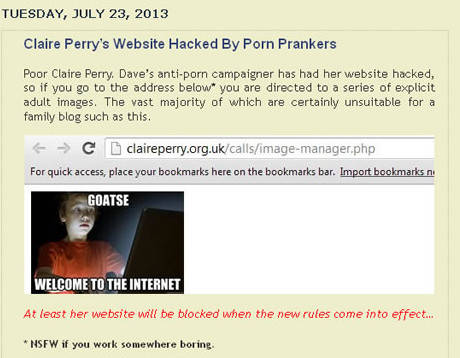Adam Penenberg had himself investigated in the late 1990s and wrote that up for Forbes. This time around, he asked Nick Percoco to do the same thing, and was quite weirded out by the experience:
It’s my first class of the semester at New York University. I’m discussing the evils of plagiarism and falsifying sources with 11 graduate journalism students when, without warning, my computer freezes. I fruitlessly tap on the keyboard as my laptop takes on a life of its own and reboots. Seconds later the screen flashes a message. To receive the four-digit code I need to unlock it I’ll have to dial a number with a 312 area code. Then my iPhone, set on vibrate and sitting idly on the table, beeps madly.
I’m being hacked — and only have myself to blame.
Two months earlier I challenged Nicholas Percoco, senior vice president of SpiderLabs, the advanced research and ethical hacking team at Trustwave, to perform a personal “pen-test,” industry-speak for “penetration test.” The idea grew out of a cover story I wrote for Forbes some 14 years earlier, when I retained a private detective to investigate me, starting with just my byline. In a week he pulled up an astonishing amount of information, everything from my social security number and mother’s maiden name to long distance phone records, including who I called and for how long, my rent, bank accounts, stock holdings, and utility bills.
[…]
A decade and a half later, and given the recent Edward Snowden-fueled brouhaha over the National Security Agency’s snooping on Americans, I wondered how much had changed. Today, about 250 million Americans are on the Internet, and spend an average of 23 hours a week online and texting, with 27 percent of that engaged in social media. Like most people, I’m on the Internet, in some fashion, most of my waking hours, if not through a computer then via a tablet or smart phone.
With so much of my life reduced to microscopic bits and bytes bouncing around in a netherworld of digital data, how much could Nick Percoco and a determined team of hackers find out about me? Worse, how much damage could they potentially cause?
What I learned is that virtually all of us are vulnerable to electronic eavesdropping and are easy hack targets. Most of us have adopted the credo “security by obscurity,” but all it takes is a person or persons with enough patience and know-how to pierce anyone’s privacy — and, if they choose, to wreak havoc on your finances and destroy your reputation.
H/T to Terry Teachout for the link.







